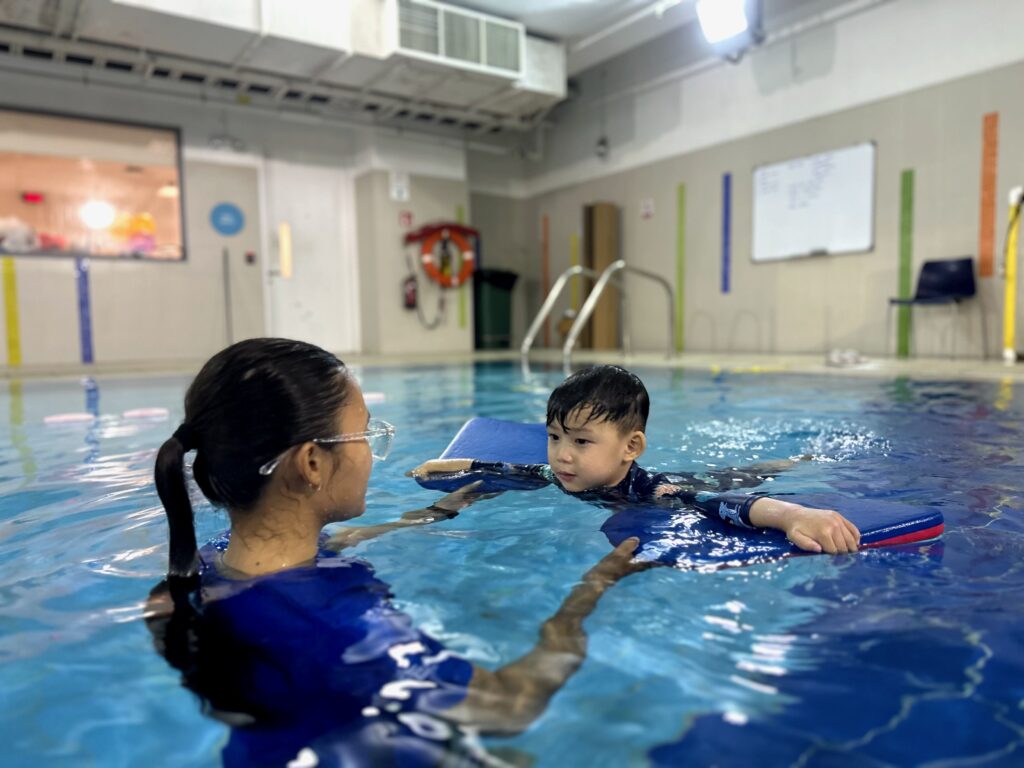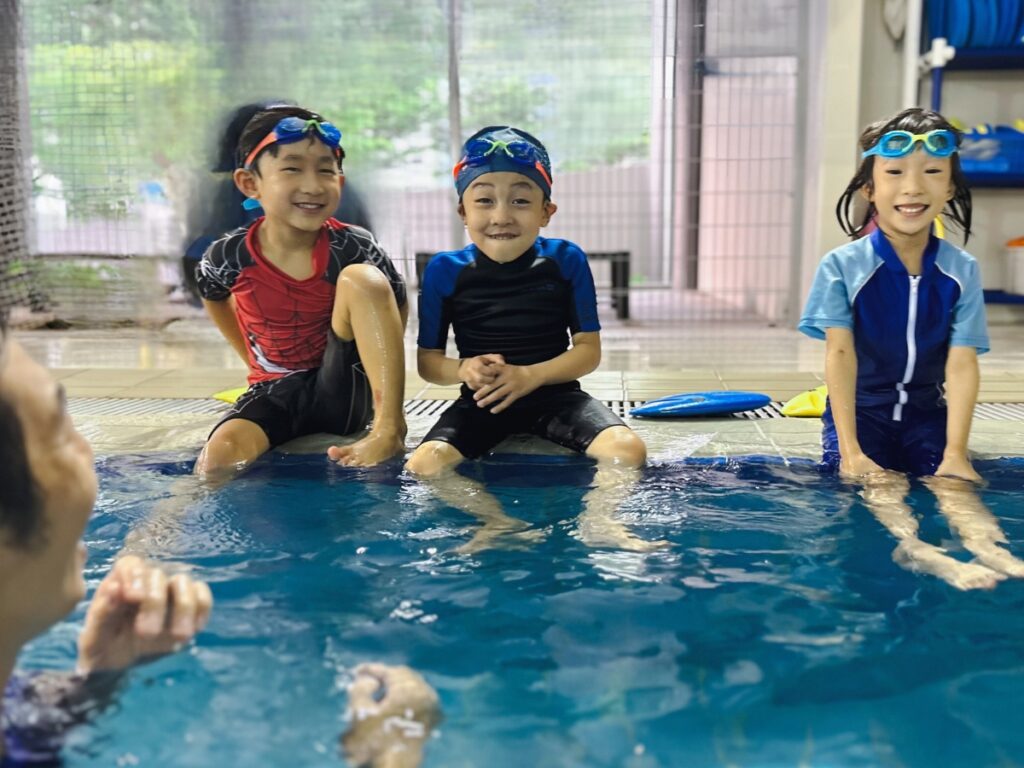From Basics to Best: Competitive Swimming Training for Kids
Hey there, future swim champions (and supportive parents)! Whether your child is just starting out or already diving into competitive waters, building strong basic skills is key to their success. From mastering the fundamentals to perfecting those advanced drills, progression is key. Early on, it’s crucial to focus on building a strong foundation – and trust me, those basic skills will really make a difference during advanced training! As they move up the ranks, training will naturally increase in both frequency and intensity. But don’t worry, with the right plan and consistent effort, they’ll be right on track. In this article, we’ll cover essential competitive swimming training tips for kids, from swim training tips for children to the best swimming specific drills for kids. Ready to dive into the journey from basics to best? Let’s get started!
Flexibility and Mobility: Why these skills matter for kids learning to swim
When it comes to swimming, flexibility and mobility aren’t just extras – they’re game-changers. Flexibility is all about how far your muscles can stretch, which is sometimes called muscle elasticity, while mobility is about how well your joints move through that range of motion. Both are essential for smooth, efficient strokes. Good flexibility and mobility can help your kid reach farther with each stroke, kick more effectively, and reduce the risk of injury. Let’s dive into some specific mobility drill progressions that’ll take them from basics to their best!
Progressive mobility in swimming: Going from basic to advanced
When building mobility from basics to advanced, it’s all about gradually increasing the complexity and control in each movement. Start simple with basic drills like arm circles and leg swings. For arm circles, move your arms clockwise, followed by anticlockwise, drawing as big a circle with your hands. The goal is to exercise the maximum range of motion you can manage at that point in time. For leg swings, swing the legs forward and backwards as far forward and back as you can manage, you may use a pillar for support. These help improve overall joint range of motion, especially in the shoulder and hips, which are key to effective strokes and kicks. As you progress, introduce more dynamic drills such as inchworms and lunges with a twist, which not only enhance mobility but also activate core muscles for better balance and control in the water.
For more advanced mobility work, add resistance bands and rotational stretches. Resistance band can add that extra challenge to improve both flexibility and strength in the joints, allowing your swimmer to move more powerfully through each stroke. Drills like banded shoulder rotations and heel taps not only increase mobility but help develop the coordination needs for competitive swimming. The progression here is all about increasing range, stability and control so that every stroke is more efficient and powerful.
[X Lab coaches say…]Mobility work should be done regularly or even daily for athletes! It is easy to perform and requires little to no equipment. If you do not have access to resistance bands, you can always use a long towel or skipping rope. I enforce mobility and functional sequences into my swimmers’ warm up routines, ensuring that they are familiar with the movements. I progress their routines as they improve their ability to do fundamental exercises.

Strength and Conditioning Exercises for Young Swimmers
Strength and conditioning are essential for building both gross and fine motor skills in young swimmers. For the younger swimmers (6-9 years), focusing on gross motor skills through bodyweight exercises like squats, push-ups and jumping jacks is perfect. These movements help to develop overall strength and coordination without putting excessive strain on growing bodies.
As they grow into the 10-12 age group, you can start incorporating more challenging bodyweight exercises like plank variations and single-leg balances to work on core stability and balance, which are key components of fine motor skills needed for precise stroke control. Introduction to basic resistance training with bands and lightweights can be slowly introduced.
For the 13 years and above, swimmers can start resistance training progressively. Exercises such as weighted lunges, deadlifts, banded pull-aparts can boost overall strength while targeting specific muscle groups essential for powerful starts and turns. Each stage of training should focus on building a strong foundation that progresses as they grow, ensuring they’re prepared for the rigors of competitive swimming. The key is to tailor these workouts to your swimmer’s age and skills level, helping them to develop safely and effectively.
[X Lab coaches say…]
Core strength is often overlooked but it is indispensable. If you have no time for strength and conditioning sessions, do core strengthening exercises! It makes a world of difference in competitive swim stroke integrity.
Refining competitive swimming techniques for kids
Refining technique is where gross and fine motor skills come together to really make a difference. Gross motor skills help with big movements like pulling and kicking, while fine motor skills are all about the smaller, precise movements – like hand positions during a stroke or the timing of a flip turn. Both are key to perfecting your swim technique. When it comes to training, it’s not always about doing more laps in the pool. Sometimes, it is about doing them right! Conscious training, where your child focuses on the quality of each stroke and turn, often yields better results than just logging extra hours in the pool. This focus on technique ensures that they’re not only swimming faster, but also more efficiently, which ultimately boosts their competitive performance. Every improvement in technique, no matter how small, can give them an edge in races, helping them swim smarter and better.
Nutrition and Recovery for young swimmers
A healthy meal for athletes
A balanced healthy plate is key for any swimmer. Imagine a plate divided into three parts: one-third should be lean proteins (chicken, fish), another third is for whole grains like brown rice, wholemeal bread, quinoa, to provide the energy needed for long practices, and the last third is for fruits and vegetables, packed with vitamins and minerals. Healthy fats like avocado, salmon or olive oil are also important, as they help with recovery and overall health.
How much should a swimmer eat?
This is a common question that parents ask us! It really depends on their training schedules and age. Younger swimmers might need around three balanced meals with a couple of snacks, while older and more advanced swimmers who train more frequently (2 practices a day) will need extra fuel through additional small meals throughout the day. The key is to eat enough to support their energy needs without feeling overly full before practice or competition. Even when consuming more food to fuel these needs, it is advisable to consume healthier options, as suggested to be included in healthy plates.
How much rest is enough for a swimmer?
Rest is just as important as training. As athletes, sleeping eight to ten hours a day is ideal, to help your bodies recover and avoid fatigue. Adequate rest helps muscles to rebuild and strengthens the immune system, which is crucial when training regularly. The more advanced your child becomes, the more you’ll need to listen to their bodies and incorporate rest, whether it’s them taking a quick nap before practice or getting in extra sleep at night.
Do you need to drink water as a swimmer?
Good nutrition and proper recovery directly impact swimming performance. Specific nutrients like protein help repair and grow muscles, while carbohydrates provide the quick energy swimmers need in the pool. Hydration is often overlooked but it plays a significant role. Let’s clear up a common misconception: just because your child in the water, doesn’t mean they do not need to stay hydrated! Children sweat during training, they just do not feel it in the pool. Proper hydration is crucial for maintaining energy levels, preventing cramps and keeping muscles functioning at their best. Always drink water before, during, and after practice to stay ahead of dehydration. Sports drinks can be helpful during intense or long practices to replace lost electrolytes, but water should always be the go-to! Staying hydrated keeps your child performing at their peak, both in practice and on the big race day!
Mental toughness for young swimmers
Mental toughness is just as important as physical training when it comes to competitive swimming. Building resilience, confidence, and a strong competitive mindset starts with positive reinforcement and a focus on progress, not just results. Kids can start by setting small, achievable girls in practice and celebrate each victory – no matter how small. This way, they can stay motivated and confident in their swimming ability. One way to build mental toughness is through visualisation drills. Before a race or tough practice, I usually advice kids to close their eyes and mentally walk through their strokes, turns and finish. This practice helps them stay calm, focused and ready when the pressure is on. Breathing exercises or mindfulness techniques can also help to manage pre-race nerves and keep a steady head during tough competitions. Unsure of how to get your child started? Talk to their coach on how best to start on such practices!
[X Lab coaches say…]
Young swimmers are often on two ends of the spectrum: really excited to race and have fun or very nervous before their races. Supportive parents and coaches can help with alleviating nervousness and learning how to cope. It is essential to set realistic expectations with your swimmer. Kids can’t always have their best times at every single race!
The path to swimming success with a holistic approach
By now, you can see that competitive swimming training is all about progression – from mastering the basics to refining advanced techniques, every step counts toward building a strong, confident swimmer. It’s not just about one element though; it’s the combination of flexibility, strength, technique, nutrition, recovery and mental toughness that will truly set you apart. A holistic approach like this ensures your child is growing in all areas, preparing them for success both in the pool and beyond.
At X Lab, we specialise in this well-rounded approach to training, offering customised squad programs that meet each swimmer’s unique needs. Ready to take your child’s swimming skills to the next level?
Click here to book a session and experience the X Lab difference firsthand!




